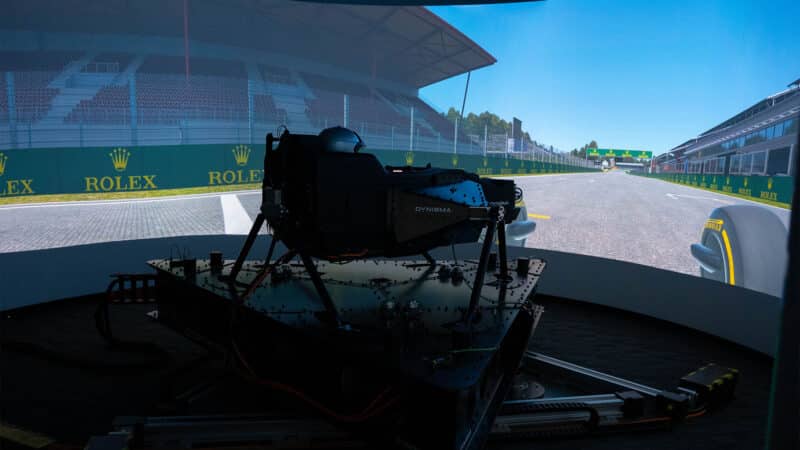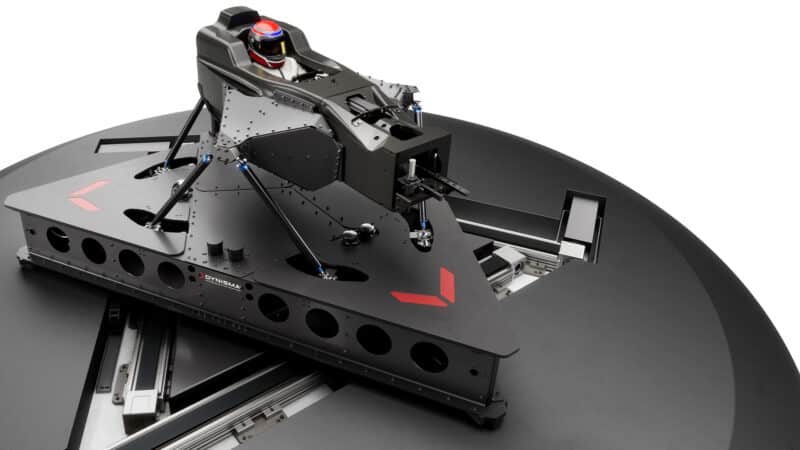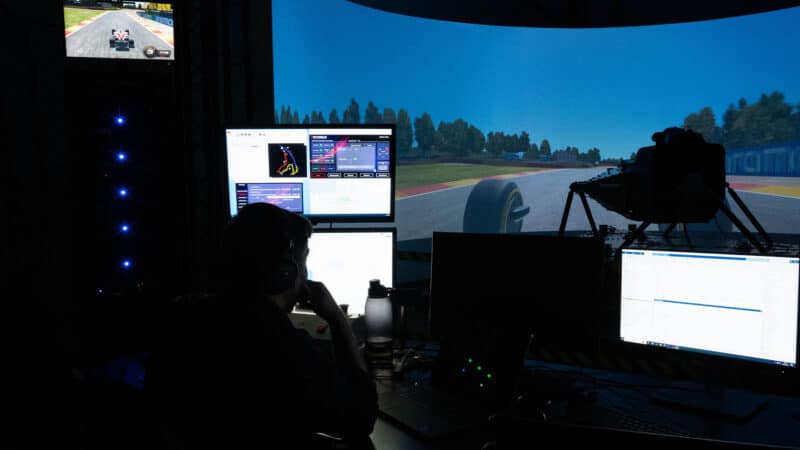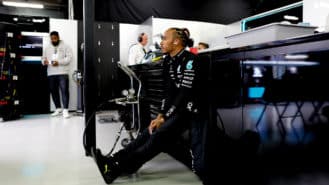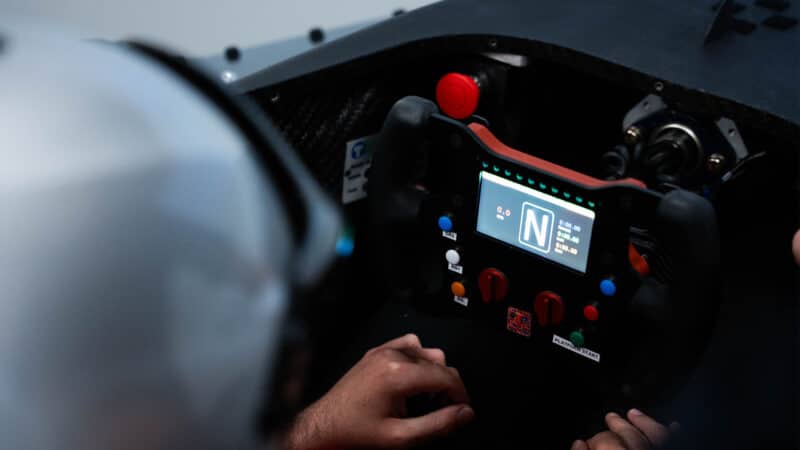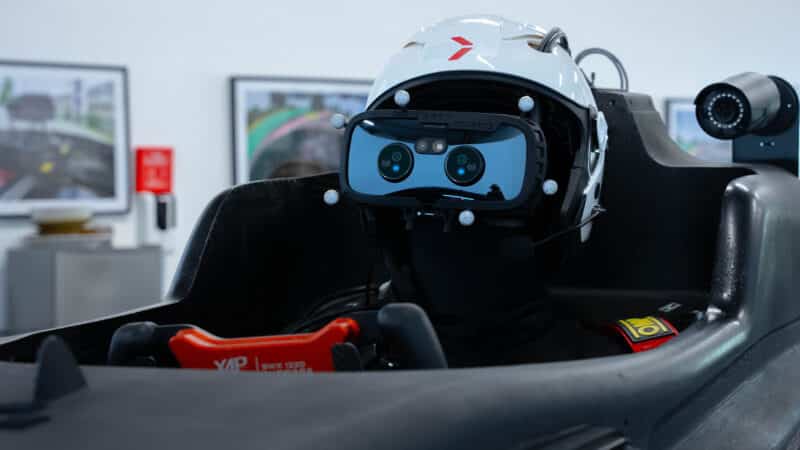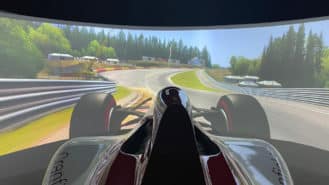While many other motor sport industry-standard driving simulators have a 20-50-millisecond delay between an input, such as moving the steering wheel and the simulator reacting, the Dynisma DMG-1, which I’m driving, delivers feedback at 3-4 milliseconds. If you’re an F1 driver with heightened senses, it makes the experience noticeably more realistic and far more useful.
Warne tells Motor Sport he had a vision to push beyond what was currently being achieved in the simulation world – the speeds of information delivery were sloth-like in his opinion.
“I could see that there was a massive gap, that the whole industry was underachieving,” he says. “Other [sim] manufacturers were targeting, say, 20Hz of bandwidth, whereas we’re now at 100Hz – what that means is more information through the system and giving it more promptly.”
These stark statistical differences are what, according to Dynisma, makes its products “the most dynamic, realistic and scalable driving simulators in the world”.
The secret behind it is, as a certain Ferrari F1 driver will appreciate, a uniquely smooth operation. It’s based on a platform which moves forwards, backwards and side-to-side. On top of this sits the chassis, supported by six legs, which move individually. These add up to what Warne calls “nine degrees of freedom”, allowing three-dimensional movement and rotation.
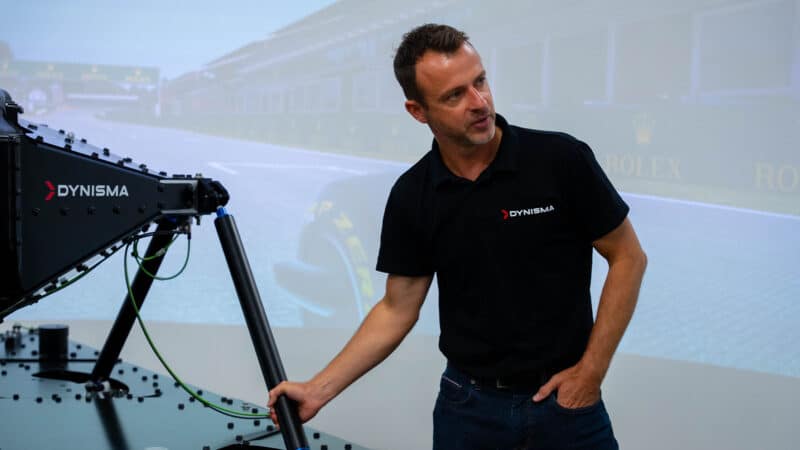
Founder Ash Warne demonstrates ‘back-drivable’ system
Dynisma
“We call it the ‘High Frequency Platform’ – this is what differentiates us from our competitors.
“Some manufacturers do also have nine degrees of freedom, but they don’t take advantage of them in the way that we do. They haven’t developed a system that isolates one from the next.
“Significantly, our legs are ‘highly backdrivable’, which means that you can move them with your hand like this [Warne gives the machine a good rock to demonstrate] – it’s in contrast to other systems whereby they’re kind of locked up with friction [and are therefore slower]. This is much more like a real vehicle’s suspension, which we’ve taken inspiration from, where you can press down the corner of the car and it will move.”
Fast movement is crucial when it comes to keeping up with the computing element. “The software system is incredibly responsive,” he says. “Certain elements of the system are running at 4000 times a second, and so we need to be able to ensure that every part of the system is operating quickly enough so that there are no delays.”
Testing the Ferrari F1 simulator
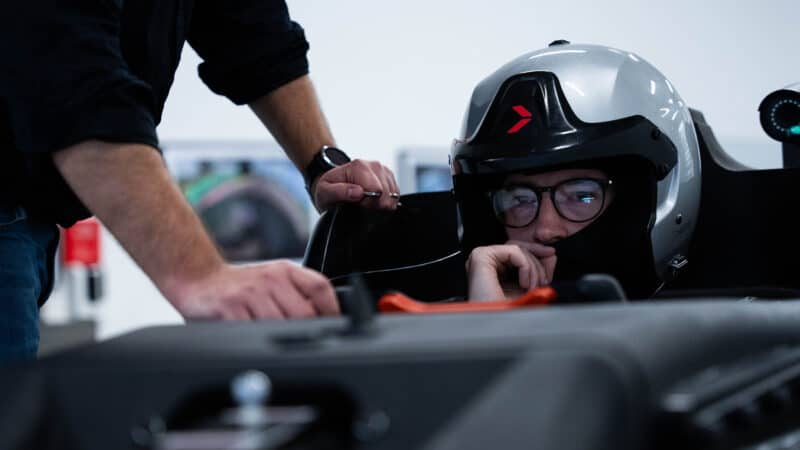
Dynisma has its latency down to roughly 3 milliseconds
Dynisma
So what does it actually feel like to drive? Once we’ve inspected the tech, the team gears me up to take on two simulated F1 tests, one using Dynisma’s giant 20ft x 10ft screen, illuminated by six powerful projectors, and the other using VR. My previous driving experience was limited to pootling along in cheap hatchbacks and, in the virtual world, finishing mid-pack on Gran Turismo during the Daihatsu Invitational, so this all represented a slight step up.
In these circumstances, it’s de-rigeur to choose Spa-Francorchamps for the semi-useless-journo-does-simulator-test-feature, in order to answer the much-hyped question: ‘How does it really feel to drive Eau Rouge in a [simulated] F1 car?’ As many of my predecessors have attested, it’s actually quite tricky.
Beginning from a slightly indignant standstill on the Spa start/finish in Dynisma’s generic approximation of an F1 car, you can only put your foot fully down once in fourth gear – I found this out the hard way coming out of La Source – otherwise the wheelspin is simply too much to contend with.
